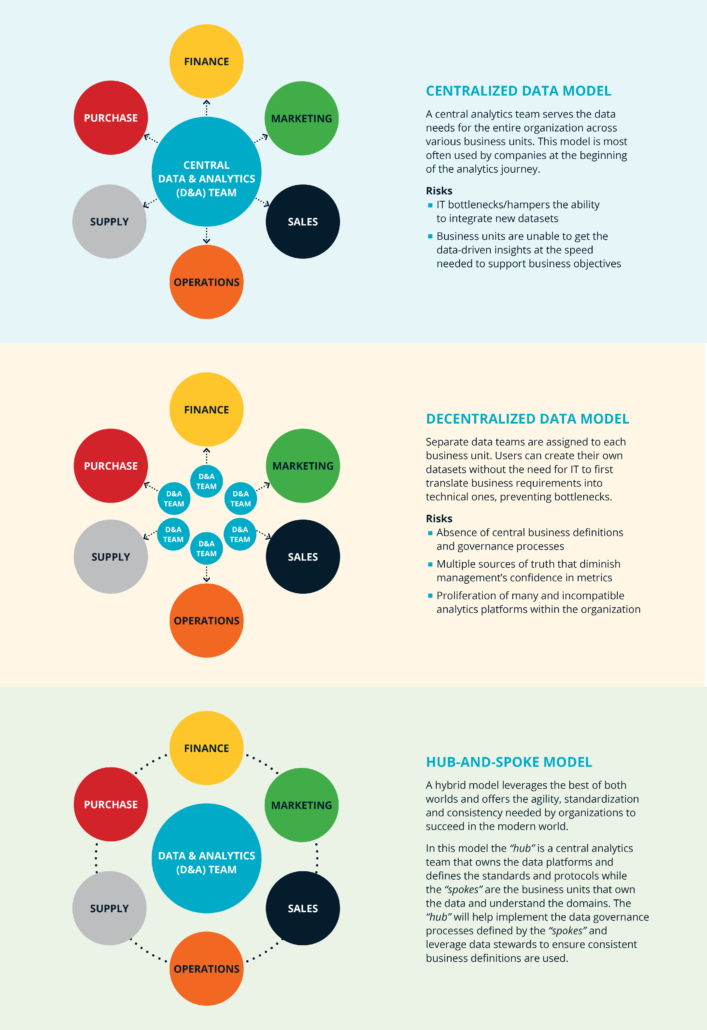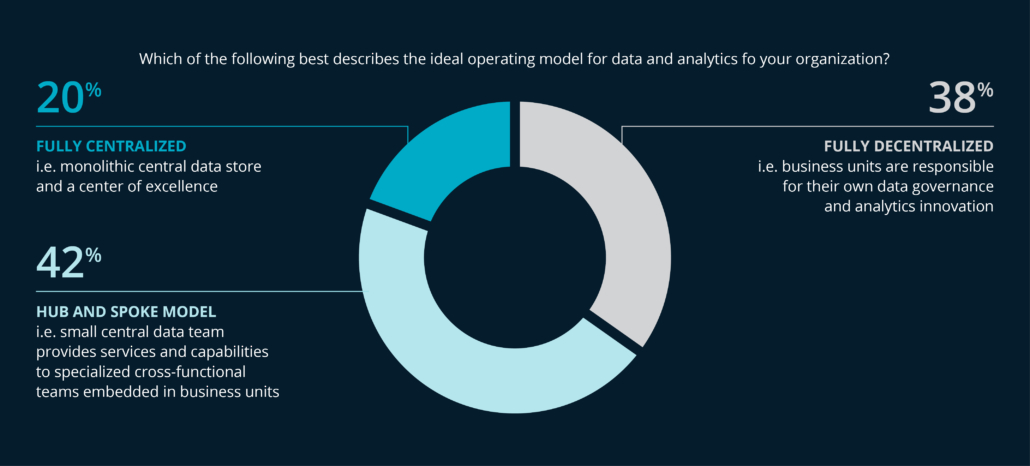In today’s world, data is everything and the pressure to go digital is constant. Data-driven decision making is critical for organizations across industries to stay competitive. As a result, companies are aiming to achieve a maturity level that enables them to make decisions based on “collective facts” instead of facts from siloed datasets.
Organizations need to enrich their existing data ecosystems with third-party datasets (weather, financial market, geospatial and others) as it has the potential of offering huge value via additional insights from the consolidated datasets. In addition, they also need to be able to analyze both operational and transactional data using the same analytics platforms. On top of that, the speed at which businesses would like to explore and leverage different data domains to gain business insights changes rapidly so it is important for your data analytics strategy to be nimble and agile to quickly adapt to changes.
Companies must review and revise their data management strategies to gain competitive advantage, maximize benefits and reduce technical debt.
Our research with 100 data and analytics leaders from various companies shows that 42% feel the hub-and-spoke model was ideal for their business, 38% feel the “decentralized” model suits their organization, and the rest only — 20% — believe that the “centralized” model is the best model for their needs.
Three Data Models and How They Differ

80% of leaders surveyed agree that a fully centralized data and analytics operating model is not ideal for their organization.
It’s becoming clear that leaders across industries are moving away from centralized models and that developing and implementing an effective hub-and-spoke model empowers business users, frees data specialists to focus on high-value initiatives, and gives management trustworthy metrics that can help drive impressive outcomes.

For a successful transition or adoption of the hub-and-spoke model, stakeholder alignment and approval is paramount. The model eventually needs to be accepted by the business functions who in turn will define the data domains and own the data products that will be delivered. Clearly defining the targeted outcomes will assist in getting the business buy-in that’s required, as modern data management strategies and architecture are no longer driven by IT alone.
There are seemingly endless considerations and many challenges on the path to designing, building, implementing, and fostering widespread adoption of a hub-and-spoke data model. But you don’t need to go it alone. Find a partner who can meet you where you are and help get you to where you need to be. If you have specific questions about your data model or data management strategy, let’s make a time to talk.
To learn more, read the whitepaper: Data Leadership: Top Cloud Analytics Mistakes – and How to Avoid Them
a Hub-and-Spoke Data Model

